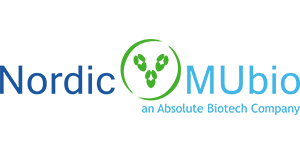Sheep anti Human secretory component (free and bound), conjugated with Peroxidase
Sheep anti Human secretory component (free and bound), conjugated with Peroxidase, Polyclonal, Clone: Polyclonal
SKU
NORShAHu/SC/PO
Packaging Unit
1 ml
Manufacturer
Nordic-MUbio
Availability:
loading...
Price is loading...
Clone: Polyclonal
Label: HRP
Background: Tested in immunoelectrophoresis, double radial immunodiffusion and ELISA against a panel of appropriate secretions and purified Ig isotypes. The antiserum reacts with both bound secretory component (secretory IgA) and with the free SC present in human secretions. In immunoelectrophoresis against human milk, using a high electroendosmosis agar plate, free SC is precipitated in the alpha-2 region. The immunoconjugate does not react with other molecular forms of IgA, or with any other secretory or plasma protein. In immunocytochemical and immunohistochemical staining for the detection of free SC and secretory IgA at the cellular and subcellular level by staining of appropriately treated cell and tissue substrates. In non-isotopic assay methodology (e.g. ELISA) to identify and measure SC or secretory IgA in human body fluids.This immunoconjugate is not pre-diluted. The optimum working dilution of each conjugate should be established by titration before being used. Excess labelled antibody must be avoided because it may cause high unspecific background staining and interfere with the specific signal.
Source: Secretory component is present in human secretions bound to secretory IgA (sIgA) and in free form. Secretory IgA (sIgA) functions as a dimer or polymer and accounts for almost all specific mucosal antibody activity. A molecule of sIgA is made up of two molecules of IgA, one J chain and one SC (MW 65,000). The dimer IgA is transported into secretions by its binding to the SC on the epithelial cells. Under normal conditions, sIgA contains both subclasses IgA1 and IgA2, since both are capable of binding SC. SC also has an affinity for polymeric IgM. Purified free human secretory component isolated from pooled milk is used for immunization. Freund’s complete adjuvant is used in the first step of the immunization procedure.
Specificity: HRP-conjugated IgG fraction of polyclonal sheep antiserum to human secretory component, free and bound
Label: HRP
Background: Tested in immunoelectrophoresis, double radial immunodiffusion and ELISA against a panel of appropriate secretions and purified Ig isotypes. The antiserum reacts with both bound secretory component (secretory IgA) and with the free SC present in human secretions. In immunoelectrophoresis against human milk, using a high electroendosmosis agar plate, free SC is precipitated in the alpha-2 region. The immunoconjugate does not react with other molecular forms of IgA, or with any other secretory or plasma protein. In immunocytochemical and immunohistochemical staining for the detection of free SC and secretory IgA at the cellular and subcellular level by staining of appropriately treated cell and tissue substrates. In non-isotopic assay methodology (e.g. ELISA) to identify and measure SC or secretory IgA in human body fluids.This immunoconjugate is not pre-diluted. The optimum working dilution of each conjugate should be established by titration before being used. Excess labelled antibody must be avoided because it may cause high unspecific background staining and interfere with the specific signal.
Source: Secretory component is present in human secretions bound to secretory IgA (sIgA) and in free form. Secretory IgA (sIgA) functions as a dimer or polymer and accounts for almost all specific mucosal antibody activity. A molecule of sIgA is made up of two molecules of IgA, one J chain and one SC (MW 65,000). The dimer IgA is transported into secretions by its binding to the SC on the epithelial cells. Under normal conditions, sIgA contains both subclasses IgA1 and IgA2, since both are capable of binding SC. SC also has an affinity for polymeric IgM. Purified free human secretory component isolated from pooled milk is used for immunization. Freund’s complete adjuvant is used in the first step of the immunization procedure.
Specificity: HRP-conjugated IgG fraction of polyclonal sheep antiserum to human secretory component, free and bound
| SKU | NORShAHu/SC/PO |
|---|---|
| Manufacturer | Nordic-MUbio |
| Manufacturer SKU | ShAHu/SC/PO |
| Package Unit | 1 ml |
| Quantity Unit | STK |
| Reactivity | Human |
| Clonality | Polyclonal |
| Application | Immunohistochemistry (paraffin), Western Blotting, ELISA, Immunocytochemistry, Dot Blot |
| Host | Sheep |
| Conjugate | Conjugated, PE (Phycoerythrin) |
| Product information (PDF) | Download |
| MSDS (PDF) |
|

 Deutsch
Deutsch







